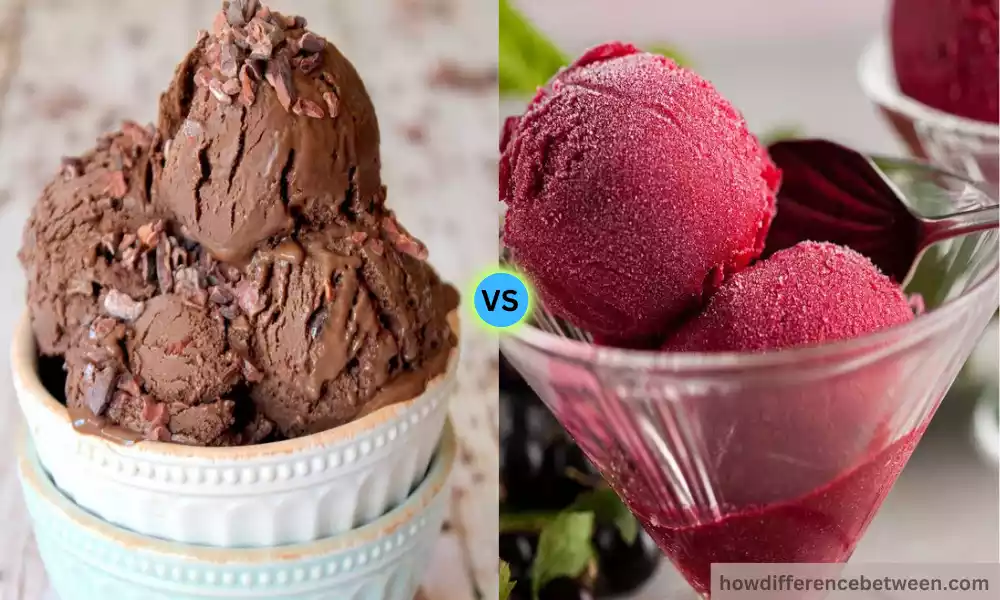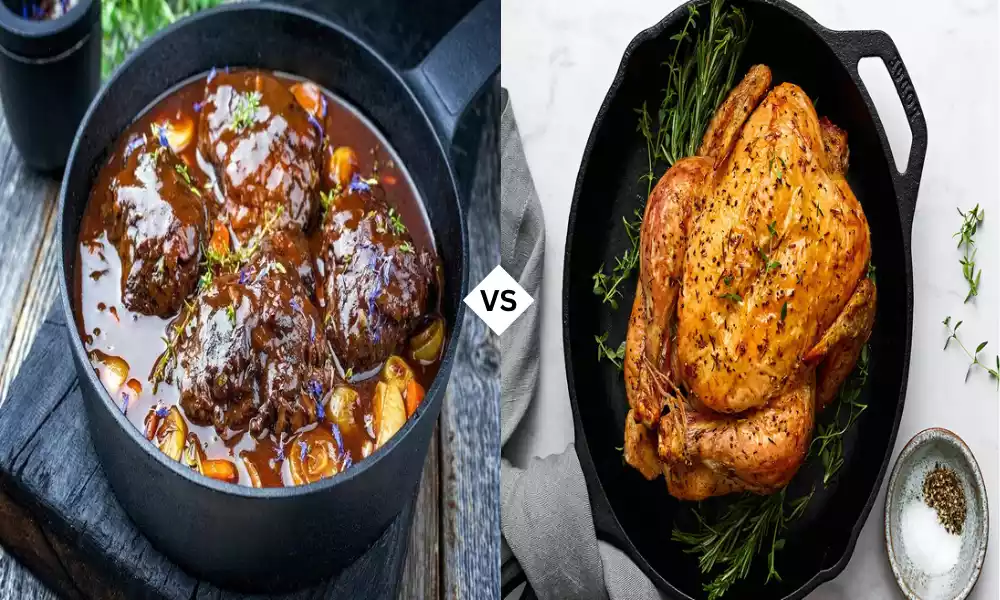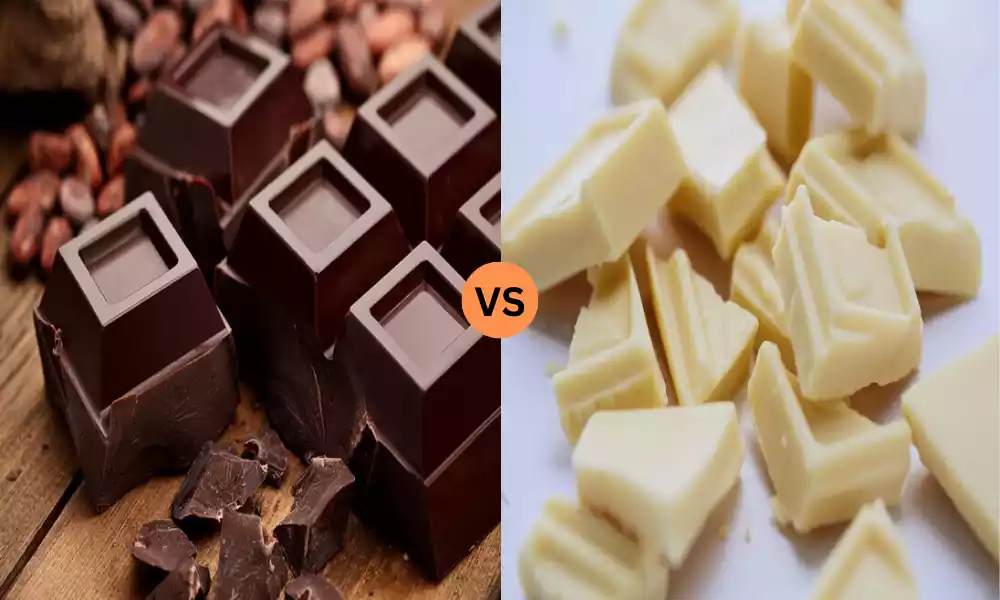Gelato and Sorbet are two distinct frozen desserts celebrated for their unique qualities. Originating from Italy, gelato is a creamy delight made primarily with milk, featuring a dense, silky texture and a wide range of flavors, including rich and savory options. In contrast, sorbet, with its roots in France, is dairy-free, relying on fruit puree or juice for its icy, refreshing texture and typically offering a spectrum of fruit-focused flavors. Understanding the differences between these frozen treats can elevate your dessert experience and open the door to a world of diverse flavors and textures.
Definition of Gelato
Gelato is a traditional Italian frozen dessert that is similar to ice cream but distinct in several ways. It is made with a base of milk, sugar, and flavorings such as fruit purees, nut pastes, or chocolate, but it contains less fat than traditional ice cream. Gelato is churned at a slower speed and typically incorporates less air during the freezing process, resulting in a denser and smoother texture.

It is served at a slightly warmer temperature than ice cream, which enhances its intense flavor and creamy consistency. Gelato is known for its rich and luxurious taste, and it comes in a wide variety of flavors, both traditional and innovative.
Definition of Sorbet
Sorbet is a frozen dessert that is typically fruit-based and known for its refreshing and icy texture. Unlike gelato or ice cream, sorbet is dairy-free, made primarily from fruit puree or juice, sugar, and water. It is churned during the freezing process to create a smooth, crystalline texture, resulting in a light and palate-cleansing treat. Sorbet is often used as a palate cleanser between courses in a meal but is also enjoyed as a standalone dessert.
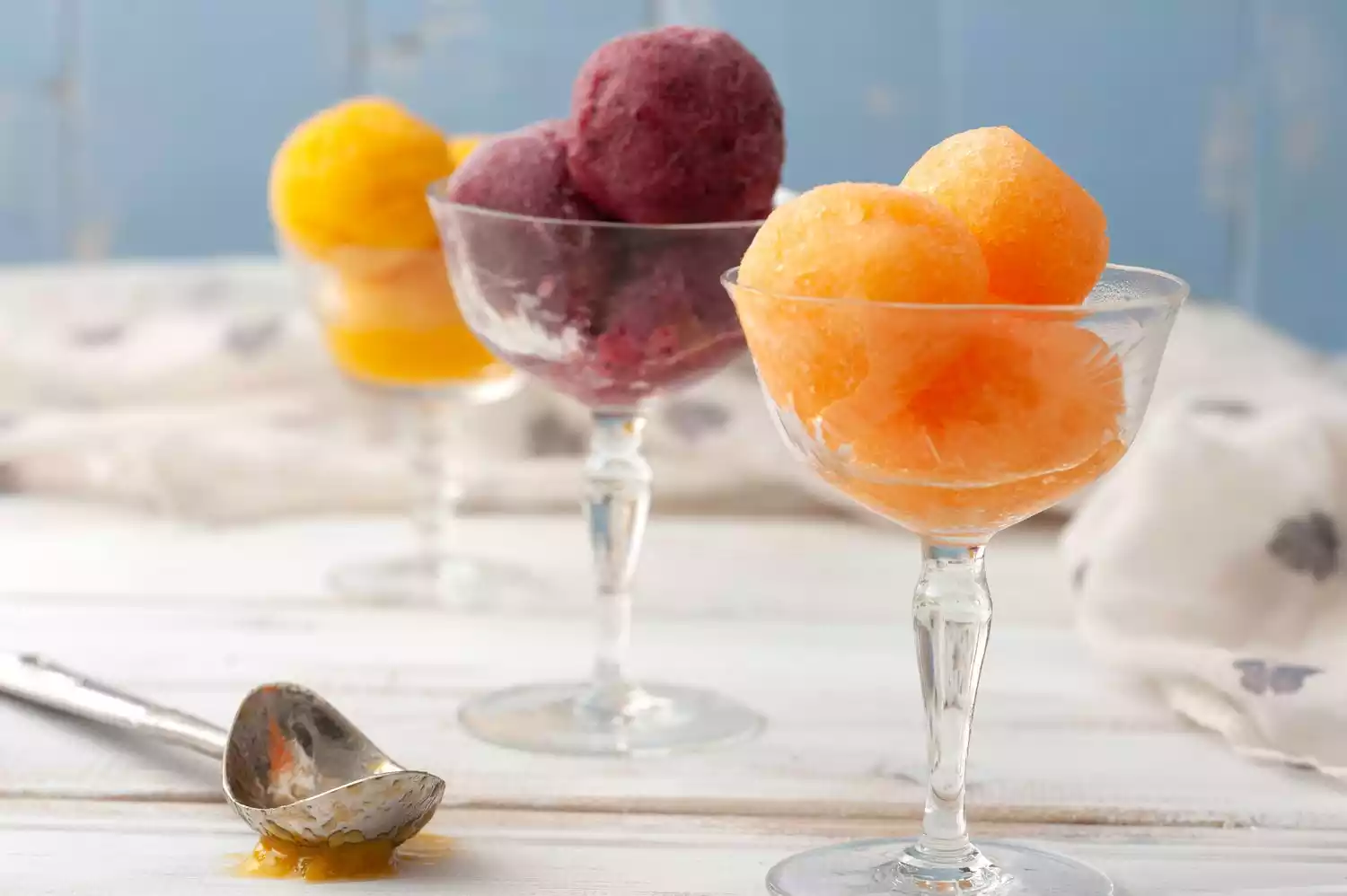
It comes in a variety of fruit flavors, and sometimes, herbs or spices are added to enhance its taste complexity. Sorbet is a popular choice for those with dairy allergies or lactose intolerance.
Comparison Table of Gelato and Sorbet
Here’s a comparison table highlighting the key differences between gelato and sorbet:
| Aspect | Gelato | Sorbet |
|---|---|---|
| Composition | Dairy-based (milk and sometimes egg yolks) | Dairy-free (fruit puree or juice) |
| Texture and Consistency | Creamy and dense | Icy and light |
| Fat Content | Higher due to dairy content | Virtually fat-free |
| Flavor Options | Broader range, including cream-based and savory options | Primarily fruit-focused flavors |
| Serving Temperature | Slightly warmer (around 5-10°F or -15 to -12°C) | Much colder (around -10 to 0°F or -23 to -18°C) |
| Origin | Italy | France |
| Typical Use | As a rich and indulgent dessert | As a refreshing palate cleanser or dessert |
| Dietary Considerations | May not be suitable for lactose-intolerant individuals | Suitable for individuals with dairy allergies or lactose intolerance |
This table provides a concise overview of the main distinctions between gelato and sorbet, helping consumers make informed choices based on their preferences and dietary needs.
Making Process of Gelato
The making process of gelato is a precise and artful craft that results in its distinctive creamy texture and rich flavor. Here’s a simplified step-by-step guide to making gelato:
Ingredients:
- Whole milk
- Sugar
- Glucose syrup (optional, to improve texture)
- Stabilizers and emulsifiers (optional, for consistency)
- Flavorings (e.g., vanilla, cocoa powder, fruit puree, etc.)
Equipment:
- Gelato machine (gelato maker or gelato batch freezer)
- Stovetop or heat source
- Mixing bowls
- Whisk or paddle
- Thermometer
- Freezer storage containers
Steps:
- Prepare the Base:
- Combine milk, sugar, and optional glucose syrup in a saucepan.
- Heat the mixture over low-medium heat, stirring until the sugar dissolves.
- Heat the mixture to around 165°F (74°C) but avoid boiling it.
- Flavor Infusion (Optional):
- If you’re making flavored gelato (e.g., vanilla, chocolate, fruit), add the desired flavorings. For example, vanilla extract or cocoa powder for chocolate.
- If using fruit puree, blend the fruit and add it to the base while it’s still warm.
- Cool the Base:
- Allow the base mixture to cool. You can speed up this process by placing the mixture in an ice bath.
- Chill the Base:
- Refrigerate the mixture for several hours, or preferably overnight. This step helps the mixture mature and develop a better flavor.
- Prep the Gelato Machine:
- Make sure your gelato machine is pre-chilled according to the manufacturer’s instructions.
- Churning:
- Pour the chilled gelato base into the gelato machine.
- Follow the manufacturer’s instructions for churning. Gelato machines typically churn at a slower speed than ice cream makers, which results in less air incorporation and a denser texture.
- Transfer and Harden:
- Once the gelato reaches a semi-frozen, soft-serve consistency, transfer it to a freezer-safe container.
- Cover the container and place it in the freezer for a few hours or until it reaches the desired firmness.
- Serve:
- Take the gelato out of the freezer just a few minutes prior to serving to allow it to soften slightly.
- Scoop and serve your homemade gelato in cups, cones, or alongside your favorite desserts.
Remember that this is a simplified overview of the gelato-making process. Professional gelato makers may use additional techniques, such as aging the base mixture, and may have specialized equipment to achieve the perfect consistency and flavor. Homemade gelato allows for creativity with flavors and is a delightful treat to enjoy on a warm day.
Making Process of Sorbet
Making sorbet is a straightforward process that yields a refreshing, fruit-based frozen dessert. Here’s a step-by-step guide to making sorbet:
Ingredients:
- Fresh or frozen fruit (e.g., berries, citrus, mango, etc.)
- Sugar
- Water
- Optional flavorings (e.g., lemon or lime zest, herbs like mint, or a splash of liqueur)
Equipment:
- Blender or food processor
- Fine-mesh strainer or cheesecloth
- Mixing bowl
- Whisk
- Ice cream maker (optional)
Steps:
- Prepare the Fruit:
- Wash and peel the fruit as needed, removing any seeds or pits. If using frozen fruit, allow it to defrost for about 5-10 minutes prior to adding.
- Puree the Fruit:
- Place the fruit in a blender or food processor and blend until it becomes a smooth puree. If necessary, add a small amount of water to help with blending.
- Strain (Optional):
- For a smoother texture, strain the fruit puree through a fine-mesh strainer or cheesecloth into a mixing bowl. This step removes any seeds or fibrous bits.
- Prepare the Sugar Syrup:
- In a separate saucepan, combine equal parts water and sugar (e.g., 1 cup of each). Heat on medium-low until all the sugar has completely dissolved in a saucepan. Stirring frequently.
- If you want to add any flavorings, such as lemon or lime zest or fresh herbs, you can add them to the sugar syrup while it’s heating.
- Allow the sugar syrup to cool to room temperature.
- Combine Fruit Puree and Sugar Syrup:
- Mix the fruit puree and sugar syrup together in the mixing bowl. The result is your sorbet base.
- Chill the Mixture:
- Cover the mixing bowl and refrigerate the mixture for several hours or until it’s thoroughly chilled. This step allows the flavors to meld.
- Churning (Optional):
- If you own an ice cream maker, follow its manufacturer’s instructions to churn sorbet into a churnable form. Churning incorporates air and helps create a smoother texture. If you don’t already own an ice cream maker, simply follow these steps.
- Freezing:
- If not using an ice cream maker, pour the chilled sorbet base into a shallow, freezer-safe container.
- Place the container in the freezer and stir the mixture every 30 minutes for the first few hours to break up ice crystals and maintain a smoother texture.
- Continue freezing until the sorbet reaches your desired consistency, usually 4-6 hours or overnight.
- Serve:
- Prior to serving, let the sorbet sit at room temperature for a few minutes to soften slightly.
- Scoop and serve the sorbet in cups, bowls, or alongside fresh fruit for a delightful, cooling dessert.
Homemade sorbet is a versatile and customizable treat, allowing you to experiment with various fruit flavors and optional additions like herbs or liqueurs to create your unique frozen dessert.
Health Benefits of Gelato and Sorbet
Gelato and sorbet, when consumed in moderation and as part of a balanced diet, can offer certain health benefits. It’s essential to be mindful of portion sizes and added ingredients like sugar and flavorings, which can affect their overall nutritional value.
Here are some potential health benefits of gelato and sorbet:
Health Benefits of Gelato:
- Lower Fat Content: Gelato tends to contain less fat than conventional Ice cream. It is made with milk instead of cream, resulting in a lower saturated fat content, which may be preferred by individuals seeking to reduce their saturated fat intake.
- Smoother Texture: The slow-churning process of gelato can result in a denser, creamier texture compared to ice cream. This texture may be more satisfying, leading to smaller portion sizes.
- Diverse Flavors: Gelato offers a wide range of flavors, including fruit-based and savory options. This variety can make it easier to incorporate fruits and other natural ingredients into your diet.
- Calcium Content: Gelato made with milk is a source of calcium, which is essential for maintaining healthy bones and teeth.
Health Benefits of Sorbet:
- Dairy-Free: Sorbet is naturally dairy-free, making it an excellent choice for individuals who are lactose intolerant or have dairy allergies. It provides a creamy, frozen dessert option without dairy.
- Low in Fat: Sorbet is virtually fat-free, which can be appealing for those looking to reduce their fat intake for health reasons.
- Fruit Nutrients: Sorbet is typically made from fruit puree or juice, retaining the vitamins, minerals, and antioxidants found in the fruit. These nutrients may provide benefits to overall health and well-being.
- Hydration: Sorbet’s high water content can contribute to hydration, especially during hot weather when frozen treats are particularly refreshing.
- Calorie Control: Sorbet tends to be lower in calories compared to ice cream or gelato, which can make it a more calorie-conscious choice.
Both gelato and sorbet can be high in sugar, especially when commercially produced. Excessive sugar intake can lead to various health issues, so it’s advisable to consume these desserts in moderation and consider homemade versions with reduced sugar or natural sweeteners for a healthier option.
The health benefits of gelato and sorbet depend on various factors, including their ingredients, portion sizes, and individual dietary preferences and needs. As with any food, it’s best to enjoy these frozen desserts as part of a well-balanced diet and a healthy lifestyle.
Making Gelato and Sorbet at Home
Making gelato and sorbet at home can be a fun and rewarding culinary experience.
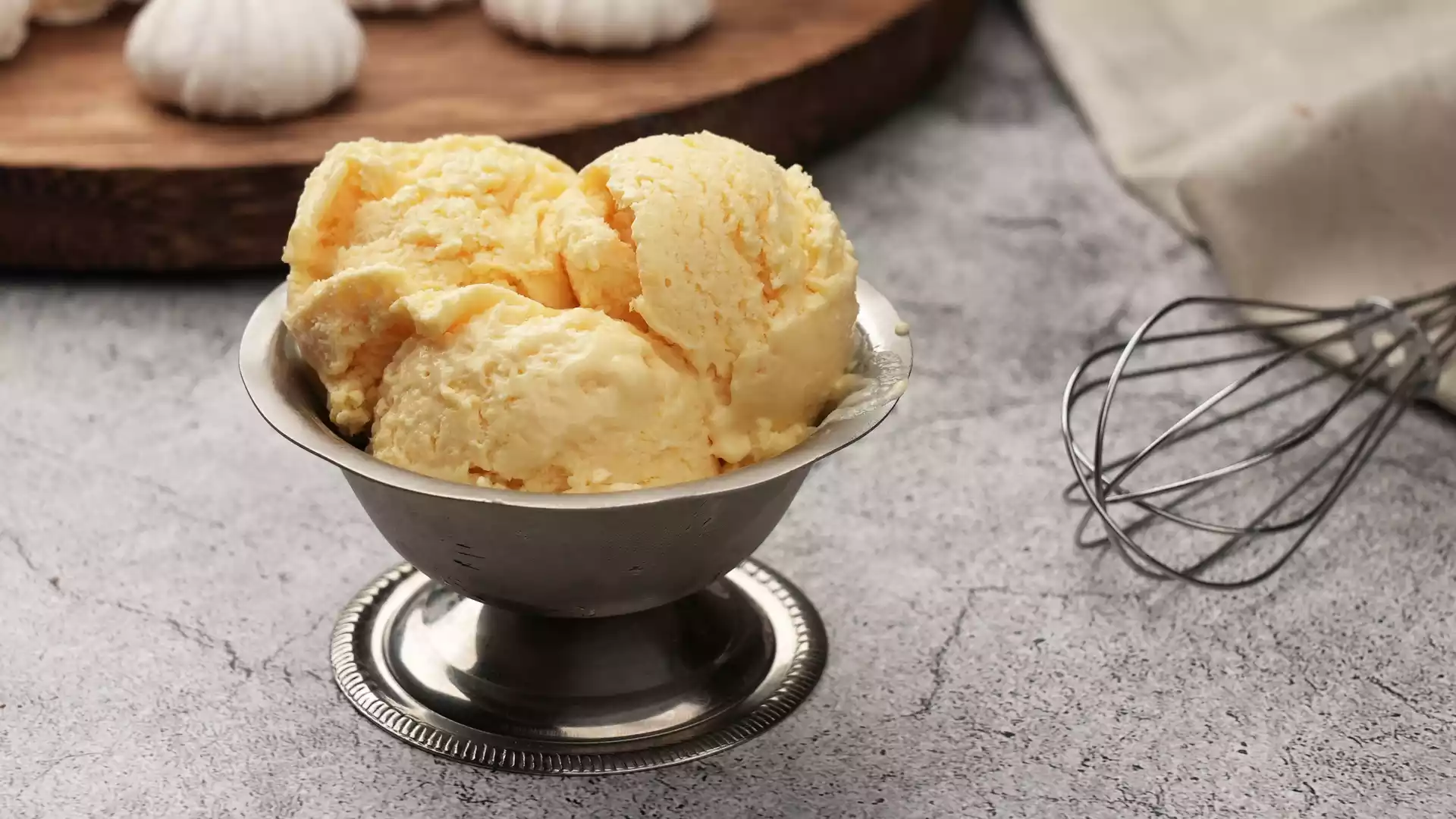
Here are basic recipes for both:
Homemade Gelato:
Ingredients:
- 2 cups whole milk
- 1 cup heavy cream
- 3/4 cup granulated sugar
- 4 large egg yolks
- Flavorings of your choice (e.g., vanilla extract, cocoa powder, fruit puree, nuts, etc.)
Instructions:
- Combine all of the milk with heavy cream in a pan. Heat the mixture over medium heat until it begins to steam, but do not let it come to a boil. Remove from heat.
- In a separate mixing bowl, whisk together the sugar and egg yolks until the mixture becomes pale and slightly thick.
- Slowly pour the hot milk and cream mixture into the egg and sugar mixture, whisking constantly to combine.
- Return the mixture to the saucepan and heat over low heat, stirring with a wooden spoon continuously, until it becomes slightly thicker. This should take about 5-7 minutes. Do not let it boil.
- Remove from heat and stir in your chosen flavorings.
- Allow the mixture to cool to room temperature, then refrigerate it for several hours or overnight.
- Once the mixture is thoroughly chilled, churn it in your ice cream or gelato maker according to the manufacturer’s instructions.
- Transfer the churned gelato to a freezer-safe container, cover, and freeze until it reaches your desired consistency.
Homemade Sorbet:
Ingredients:
- 2 cups fresh or frozen fruit (e.g., berries, mango, lemon, etc.)
- 1/2 to 3/4 cup granulated sugar (adjust to taste)
- 1/2 cup water
- Optional: 1-2 tablespoons lemon or lime juice for added brightness
Instructions:
- Place the fruit in a blender or food processor and blend until it becomes a smooth puree. If using frozen fruit, allow it to soften slightly prior to starting to use it.
- In a saucepan, combine the sugar and water. Heat on medium-low until all the sugar has completely dissolved in a saucepan. Stirring frequently.
- Remove the sugar syrup from heat and let it cool to room temperature. You can add lemon or lime juice for extra flavor at this stage.
- Mix the fruit puree and sugar syrup together in a mixing bowl. Taste and adjust the sweetness if needed by adding more sugar syrup.
- Cover the mixture and refrigerate for several hours or until it’s thoroughly chilled.
- If you possess an ice-cream maker, use its instructions to churn sorbet according to its manufacturer’s directions. Otherwise, continue with step 2.
- Pour the sorbet mixture into a shallow, freezer-safe container.
- Place the container in the freezer and stir the mixture every 30 minutes for the first few hours to break up ice crystals and maintain a smoother texture.
- Continue freezing until the sorbet reaches your desired consistency, typically 4-6 hours or overnight.
Both gelato and sorbet recipes can be customized with various flavorings and ingredients to suit your preferences. Homemade versions allow you to control the ingredients and tailor the recipes to your dietary needs and taste preferences. Enjoy your delicious homemade frozen treats!
Gelato and Sorbet Around the World
Gelato and sorbet are frozen desserts enjoyed around the world, each with its unique variations and cultural influences. Here are some examples of how gelato and sorbet are appreciated in different parts of the world:
1. Italy – Gelato:
- Italy is the birthplace of gelato, and it remains an integral part of Italian culture. Gelaterias (gelato shops), also referred to by their Italian name of gastronomy as “gelaterie,” can be found across the country.
- Traditional Italian gelato flavors include classics like stracciatella, tiramisu, pistachio, and hazelnut.
- Gelato is often served in a cup or cone, and it is common to enjoy it while strolling through picturesque Italian streets.
2. France – Sorbet:
- In France, sorbet is a popular dessert known for its light and refreshing qualities. It’s often used as a palate cleanser between courses in a formal meal.
- French sorbets frequently feature fruit-based flavors, with a focus on using seasonal, locally sourced fruits.
- Sorbet can also be enjoyed in a dessert course, and it’s sometimes served with a splash of liqueur for added flavor.
3. United States – Gelato and Sorbet:
- Gelato has gained popularity in the United States, with gelaterias and artisanal gelato shops becoming more common. American versions may incorporate local flavors and ingredients.
- Sorbet is widely enjoyed in the U.S., both in commercial brands and homemade variations. It is especially favored for its dairy-free and vegan options.
- American adaptations of gelato and sorbet include creative and sometimes unconventional flavor combinations.
4. India – Kulfi (Similar to Gelato):
- In India, a frozen dessert called “kulfi” shares some similarities with gelato. Kulfi is made with milk and flavored with cardamom, saffron, or pistachio.
- Kulfi is often molded into small, conical shapes and served on a stick. It’s a popular street food and dessert during festivals.
5. Mexico – Sorbet and Paletas:
- Mexico is known for its fruit-based sorbets and “paletas,” which are frozen fruit popsicles.
- Sorbets in Mexico often incorporate tropical fruits like mango, tamarind, and coconut, and they may have a hint of chili for a spicy-sweet contrast.
- Paletas are available in a wide range of flavors, including traditional fruit, cream-based, and even savory options like cucumber and chili.
6. Japan – Gelato and Sorbet:
- Gelato and sorbet have gained popularity in Japan, with gelato shops and artisanal ice cream parlors offering a variety of flavors.
- Japanese versions may include unique ingredients like matcha (green tea) and yuzu (citrus fruit) for distinctive flavors.
These examples highlight the global appeal of gelato and sorbet, both of which have been adapted and embraced in various culinary traditions, each offering its own twist on these delightful frozen desserts.
Conclusion
Gelato and Sorbet are two delightful frozen desserts enjoyed worldwide, each with its own distinct characteristics. Gelato, originating from Italy, offers a creamy, dense texture and a wide array of flavors, often featuring dairy-based ingredients. Sorbet, on the other hand, is known for its refreshing, fruit-forward profile and dairy-free composition, originating from France.
These frozen treats bring unique taste experiences, appealing to a wide range of preferences, and their versatility has made them beloved staples in the world of desserts, whether enjoyed on a leisurely stroll through an Italian piazza or as a palate cleanser in a gourmet French meal.

